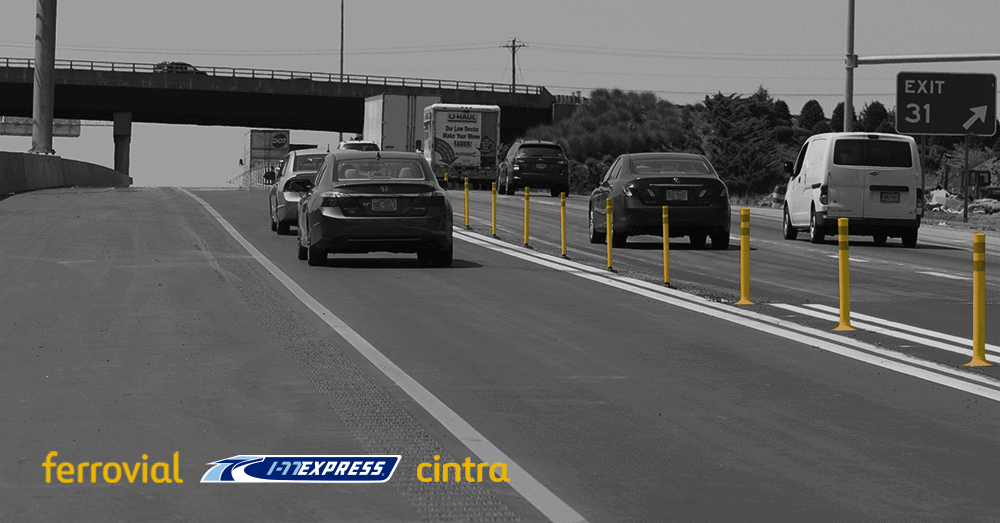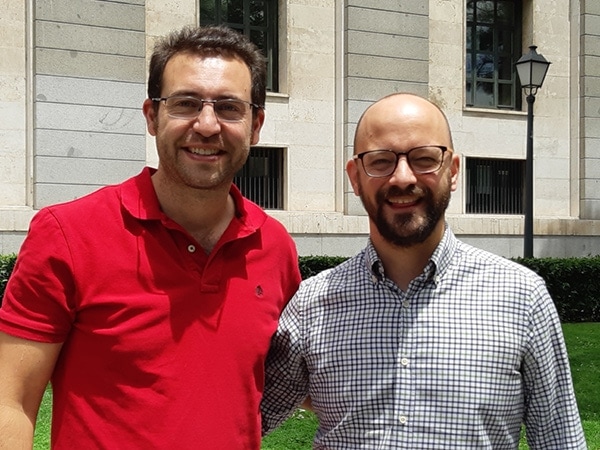
How could we make the maintenance process for road bollards better and safer? On I-77 in Charlotte, these signage elements separate fast toll lanes from all other free lanes. They are there to keep users from crossing into the toll lane without paying. Maintaining them safely and as efficiently as possible is a major engineering challenge, and to improve this process, we here at Ferrovial launched the Ennomotive I-77 Challenge in February of this year.
A few months later, we now have winners. The prize: being able to develop their solution at a real pilot prior to potential implementation at the concession. For this occasion, we interviewed them about what winning such a challenge involves and how to tackle such a challenge.
Hello, do you mind introducing yourself so that our readers can get to know you?
We’re Carlos Castillo and Alvaro Fernandez. We’re architects, and we currently work in Madrid.

Why did two architects sign up for the I-77 challenge?
The truth is that it came up by chance. Carlos suggested it one day because it was a subject that we had never investigated, and we decided to participate. We like design in general, and we don’t only work on it in the field of architecture.
How did you find out about the challenge?
We love seeing good ideas and suggesting them, as well. We usually check out professional networks like LinkedIn to find out about the latest innovations in construction, technology, etc. … That’s how we found out.
And how did you come up with the idea?
We’re both curious people who are on the go all day, taking things apart to figure out how they work, fixing other things that are broken. Taking an everyday item used in a different field and applying it to road maintenance was the key.
Was it easy to get organized and work together on this solution to the challenge?
We went to school together, and we’ve always been a team any time we had the opportunity. We work well together.
When one of us understands an idea in its most theoretical aspects, the other can bring it back down to earth and work on it together.
What is the main challenge you faced in this contest?
From the start, we knew that it was a good idea, and we were convinced that if we handled it well, we could prove it to the jury. But the main challenge we faced was technical-economic development.
What opportunities has winning opened up for you?
For now, we’ve met professionals and great people, we’re discovering sectors of product development that we were completely unaware of, and of course, winning the competition has given us the opportunity to be in publications by prestigious companies, like Ferrovial, Cintra, and Ennomotive.
Are you excited to see your idea become a real pilot?
Yes, being able to sketch something and then see how it develops is undoubtedly one of the greatest satisfactions that a designer can have.
What are Ferrovial and Cintra bringing to your project?
Without a doubt, knowledge of the sector. They can send out a problem simply so that people from different fields can offer a solution.
Throughout the contest, they were also able to respond to participants’ questions quickly and efficiently by knowing their own needs.
Right now, they’re contributing their resources to carry out the product’s physical development.
What advice can you give to future participants?
Participate. Even if it’s not your field of expertise, even if there’s no one else from your sector, if you have an idea and think it can be taken further, participate. The fresh perspective you can offer as an outsider is often more enriching than that of a professional used to the field.
Do you know the I-77 freeway better now?
Not only the I-77 but also the number of regulations and requirements that must be taken into account to carry out maintenance on a highway with such adverse conditions as this one.
What has surprised you the most about this project?
That, even though we aren’t experts in highways or transportation, we were able to apply our knowledge to solve the problem at hand.
And what will be the next steps in development?
Our idea doesn’t only work on I-77. We believe that, with the means necessary, it can be taken to other highways in the city and even to other parts of the world. It is a very versatile component.
Our next step would be to be able to develop it in all its aspects.
What is your next challenge?
We’d like to continue participating in future calls and to develop our own projects that help improve our environment by applying important concepts like reuse, sustainability, work safety, the economy, etc. … concepts that we applied for the winning solution.





There are no comments yet